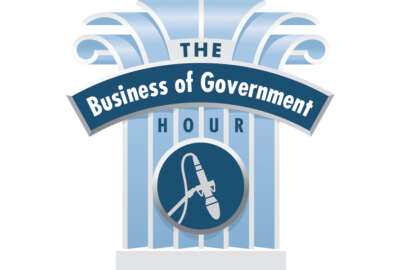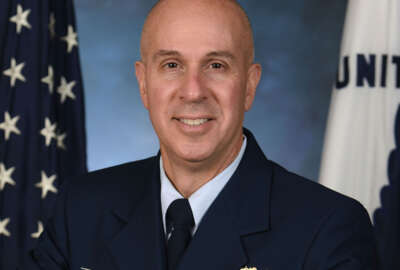Coast Guard set to adopt employee performance management program
The Coast Guard is about to adopt an employee performance management program DHS is pushing to its components. For how this will affect employees, Coast Guard human...
Best listening experience is on Chrome, Firefox or Safari. Subscribe to Federal Drive’s daily audio interviews on Apple Podcasts or PodcastOne.
As part of the Department of Homeland Security, the Coast Guard is about to adopt an employee performance management program DHS is pushing to its components. For how this will affect employees, Coast Guard human resources specialist Brooke Lawson joined Federal Drive with Tom Temin.
Interview transcript:
Tom Temin: Ms. Lawson, good to have you on.
Brooke Lawson: Good morning. Thanks for having me.
Tom Temin: So tell us what’s going on here. There is a system this is for, first of all, let’s establish that it’s for civilian employees, correct?
Brooke Lawson: That’s correct. And it’s for the GS plan employees.
Tom Temin: Okay, and about how many people in the Coast Guard does that cover do you think?
Brooke Lawson: It’s about 8,000 employees that will be impacted by this change.
Tom Temin: Alright, and tell us about the plan to switch over because it’s probably one of those easier said than done things?
Brooke Lawson: Sure. So we’re implementing an automated performance management system. This tool is going to make managing performance easier for our workforce and for our supervisors. And with that automated tool, we’re pushing out this new performance management program that DHS sponsors, DHS/PMP.
Tom Temin: And what is the difference between it and what’s in place now?
Brooke Lawson: Well, any performance management program has a lot of similarities that any of the agencies are using, but there are some differences between our legacy system and the new program. Primarily that there are more rating levels in the new systems, our old system has three rating levels, exceeds, meets and fails. And this new program, DHS/PMP has four rating levels, achieved excellence, exceeded expectations, achieved expectations and unacceptable. So it allows for more differentiation in the rating levels, and for supervisors and employees to have those discussions about performance. Another big difference is the new system really drives towards outcome based goals, and our prior system focused primarily on competencies. The new DHS/PMP program that we’re implementing focuses both on core competencies and on these outcome deliverable based goals. So it really is going to drive organizational individual performance forward.
Tom Temin: And getting back to that three versus four, that’s an important change, actually, because it’s very easy to put people in the middle bucket. But when you’ve got two above ground and two needing improvement, then you’ve kind of got to put a marker down whether this person is good or not so good.
Brooke Lawson: Really, everything that’s at the achieved expectations level and above is a positive rating. So this really is differentiating, acceptable, great, your meeting performance, and then to additional levels above that to distinguish high performers.
Tom Temin: And when you mentioned outcome based goals, then that is something that the system prompts supervisors to help establish for each employee?
Brooke Lawson: Yeah, so we’ll be training our supervisors on how to craft the DHS/PMP goals, focus on outcomes and deliverables, looking at using metrics and how you know when something is accomplished.
Tom Temin: Got it. And so that sounds like a heavy lift if you’ve got 8.000 people, and I don’t know how many supervisors, but sounds like everyone, the first time around, is going to have a big job to kind of convert from what was in there to what’s going to be in there.
Brooke Lawson: It is a change. It’s a shift in methodology of how you talk about performance and how you define what performance looks like. But we will be providing tools for supervisors and employees to collaborate and work on these goals together, and what are the standards and measures look like. We’ll be providing sample goals. So we’ll have tools to help our supervisors and employees through this change.
Tom Temin: We are speaking with Brooke Lawson, she’s a human resources specialist at the Coast Guard. And what is the timeline for getting this all in place?
Brooke Lawson: We started our implementation earlier this year in April of 2021, with a small population, and in April of 2022, we’ll be pushing out phase two of our implementation plan, which will then move the rest of our GS workforce into this. So we’re starting to gear up with all of our communications and training materials at the start of the year. And as I said, April is our timeline for go live on this new automated tool and the DHS/PMP.
Tom Temin: Alright. And is there a new kind of interface, a new software component that will be deployed to the supervisors that work with this – and I guess to the HR staff also?
Brooke Lawson: Supervisors and employees, yes, we will all use this automated tool and the Fed HR module called E-Performance. We’re really excited about moving to automation away from a paper based performance management program that a lot of benefits of this has for the employee and the supervisor in terms of accessing and updating their performance cases throughout the year.
Tom Temin: And as an early adopter, did you find it pretty easy to use?
Brooke Lawson: We’ve worked with the vendor and with some of our other components within DHS that also use this system to really learn from their best practices for implementation. And it’s a case tracking type of system where employees and supervisors can access the cases. So we’re really excited about the benefits that that will offer. We use that HR modules for other human resources cases and tracking personnel actions, recruitment onboarding. So much of our workforce and our supervisors are familiar with how that system flows. And so this is just an additional module of that system.
Tom Temin: And it sounds like that when this is in place for all of DHS, that will really aid in the portability of GS employees that might want to move, say, from Coast Guard to FEMA.
Brooke Lawson: Correct. So some of the components use this automated system, but none of the components at this point are directed to use a specific automated tool. So there are some different tools, but the DHS/PMP as a performance management program is consistent across the department. So employees will be familiar with how performance is managed, should they move within the department.
Tom Temin: And what about historical records, say old Joe’s been in the Coast Guard as a civilian for 37 years, is all of that compatible with moving into the new system, or is that pretty much done and gone?
Brooke Lawson: Those records, the old records will be kept separately, they’re not going to be scanned in and moved in, because the way that the files are kept electronically is different. But employees will still have access to their former performance records there in the EOPF system and in our Coast Guard systems. And this will become, the automated tool that we’re implementing, will become the the performance system of record. And we only keep the last four ratings of record through the records management program. So those four records, in the next four years, we’ll be building that history in our automated tool. We’re excited to implement this automated system and to make the change to this outcome based goal program for performance management at the Coast Guard. I think it’s going to be, as with any change, there’s going to be a learning curve for our employees and our supervisors. But we’re really excited to work through this and to drive organizational performance forward.
Tom Temin: Brooke Lawson is a human resources specialist at the Coast Guard. Thanks so much.
Brooke Lawson: Thank you.
Copyright © 2025 Federal News Network. All rights reserved. This website is not intended for users located within the European Economic Area.
Tom Temin is host of the Federal Drive and has been providing insight on federal technology and management issues for more than 30 years.
Follow @tteminWFED







